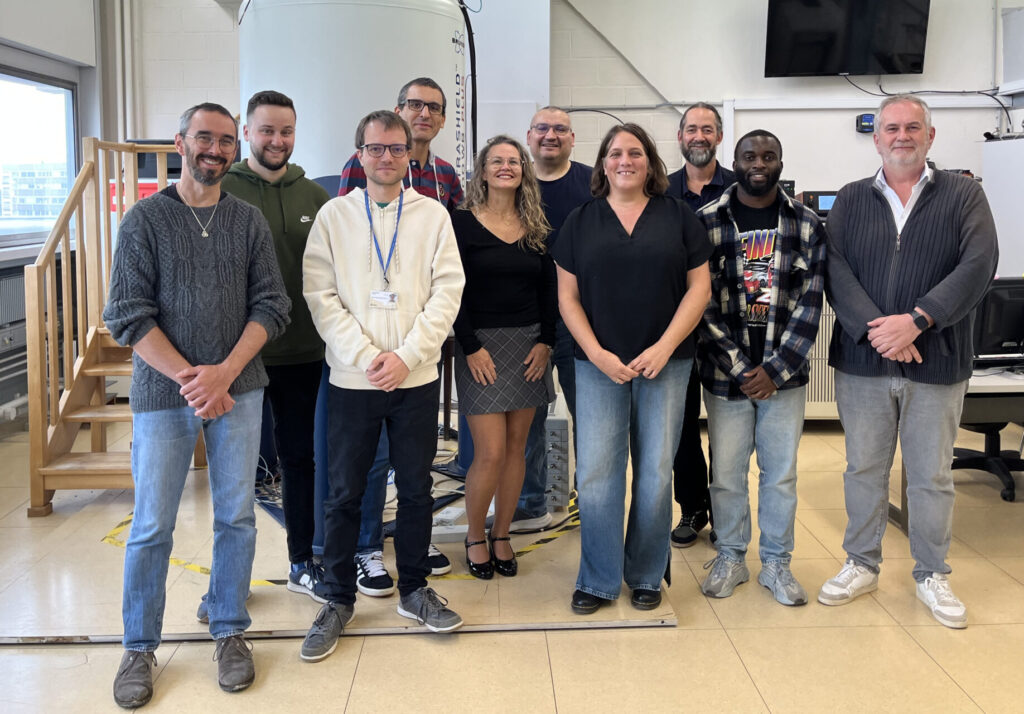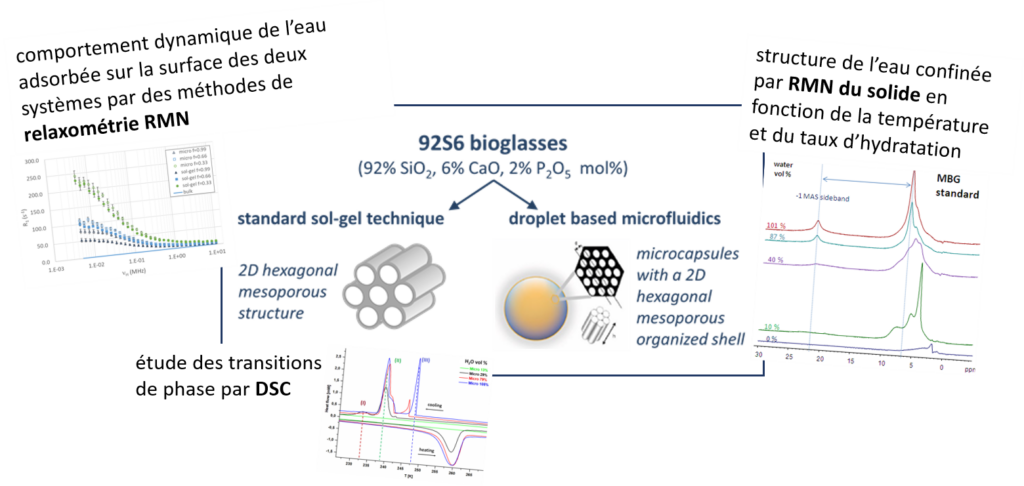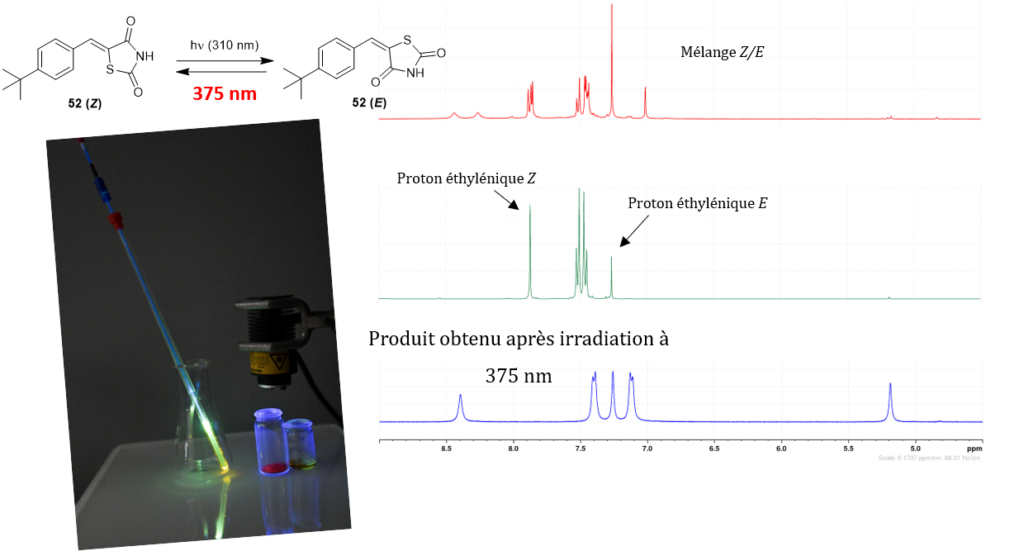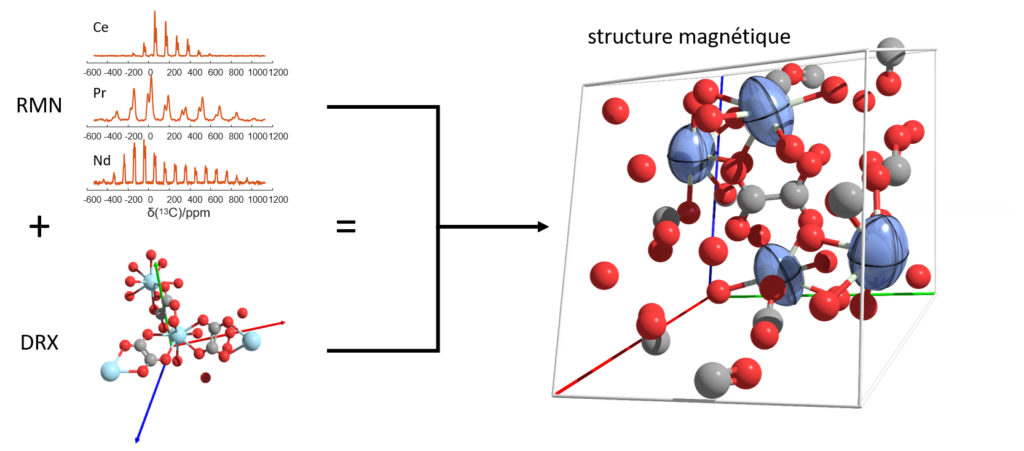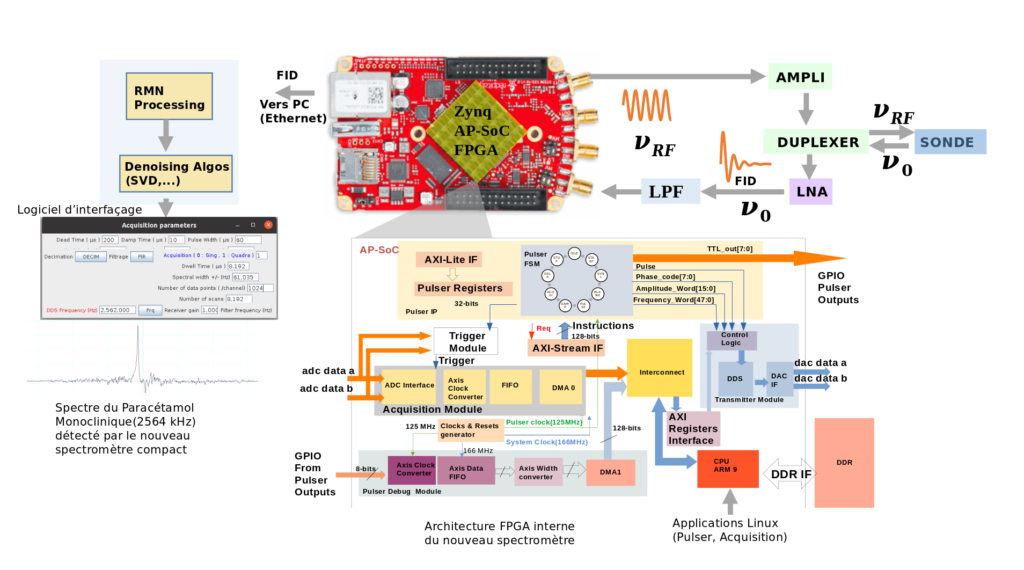NMR methodology
The research conducted by the NMR team focuses on methodological and instrumental developments in both liquid and solid phases, with the objective of structural and dynamic characterization of various materials. This fundamental research, at the frontier between chemistry, physics and life sciences, aims at original applications in many fields, from biological macromolecules to materials science, including the pharmaceutical field.

The team operates and uses the spectrometers of the NMR facility (high field spectrometers from 300 to 600 MHz, and Biospec 24/40 imager), and also relies on the laboratory’s own instruments for specific developments. This set of instruments allows to cover the whole spectrum of NMR applications, whether in liquid or solid phase, but also to perform magnetic resonance imaging (MRI), relaxometry or NQR experiments.
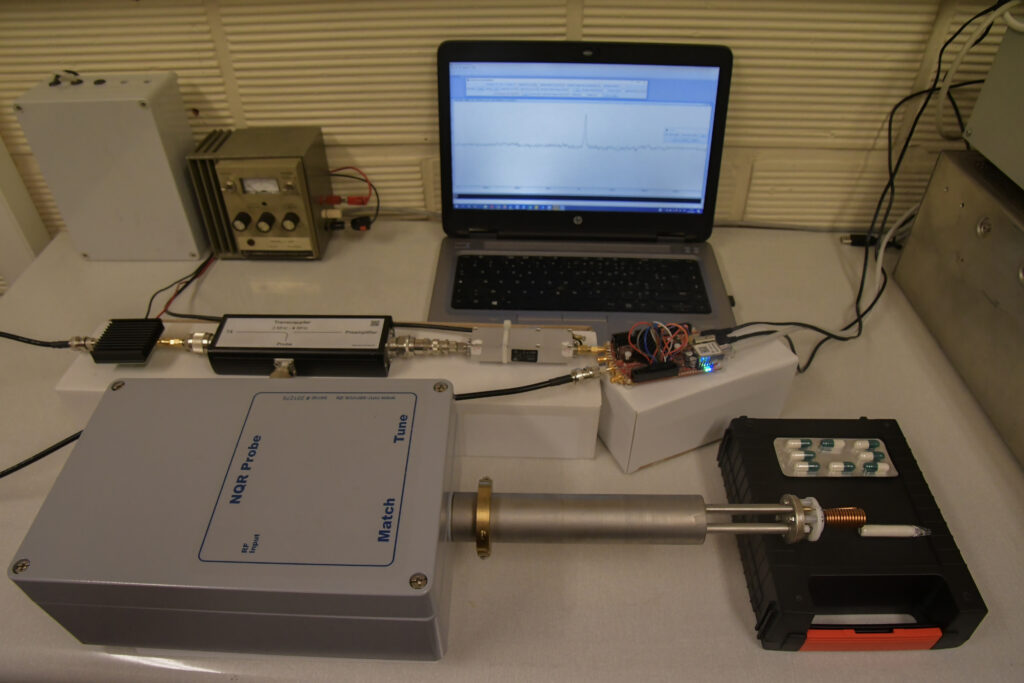
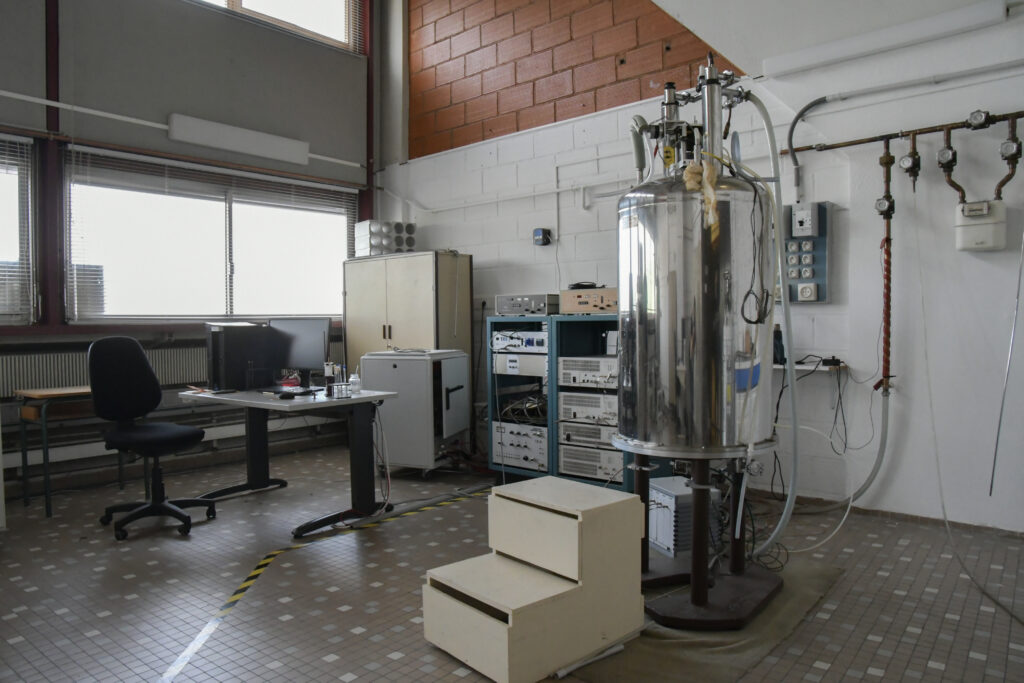

Spin relaxation and translational diffusion
The team has long been involved in spin relaxation methods with numerous applications for studying molecular mobility. Our studies concern all object scales, all spin systems, homonuclear or heteronuclear, and start from very low magnetic fields (FFC Fast Field Cycling relaxometry) to the highest fields currently used by high resolution NMR devices.
A focus has been made in recent years on relaxometry approaches, at low magnetic fields. For example, FFC methods are used at CRM2 to study the dynamics of fluids confined in porous structures. The objects of study range from systems with biological applications (bioglasses for bone reconstruction applications, microsomes of rat brains exposed to toluene…) to natural porous systems such as cements or coals.
FFC relaxometry is also used and developed in the laboratory for the study of less rigid systems such as gels (hydrogels or organogels), as well as for the characterization of potential NMR contrast agents, whether paramagnetic agents (gadolinium chelates for example) or superparamagnetic agents composed of iron oxide nanoparticles.
In addition to methods using spin relaxation, the NMR team is also interested in diffusometry methods to probe the translational dynamics of molecules in solution. The systems under study are the confined fluids mentioned above, but there are also applications in the field of biomolecules or materials.
Solid state NMR of biomolecules and chemistry for life
Solid phase NMR allows the study of protein interactions with various partners (proteins, solvents, ligands, RNA, lipids…), mainly in the context of “large size” molecular complexes.
The main systems studied by the team are protein complexes or membrane proteins. Solid state NMR and solution NMR are also used by the team members to study the encapsulation of active principles, for example cyclocurcumin in lipids or enzymes in organic-inorganic hybrid materials (biocatalysts).
Photo-NMR
This axis concerns the “in-situ” NMR characterization of photoactivatable molecules and nanoparticles. In this context, we develop new experimental methods allowing the NMR acquisition, in solution and in the solid state, of photoactive materials under light irradiation. Indeed, by using LED lamps coupled to optical fibers, it is possible to irradiate NMR samples inside the spectrometer. We can thus compare “in-situ” the switching properties (kinetics, quantum yield, activation energy) and structural properties of different classes of photo-commutable molecules, as a function of various parameters such as the type of substituents, solvents, irradiation wavelengths, and temperature.
Solid state NMR methodology: study of local molecular magnetism by paramagnetic solid state NMR and adiabatic methods
One of the recognized expertise of the NMR team concerns the study of paramagnetic solids and the use of nuclear magnetism as a probe of electronic magnetism. The method developed in the laboratory is based on solid state NMR applied to magnetic lanthanide complexes and relies on a simulation of the NMR spectrum by a dipolar model of the hyperfine interaction. The model used allows us to parameterize the crystalline and magnetic structures and to simulate an NMR spectrum in a few seconds.
Another research axis of the team in solid state NMR methodology is the control of spin dynamics using particular pulses sequences (recoupling, decoupling, CPMG etc). A specific expertise is the use of adiabatic pulses in solids to try to improve the existing methods of decoupling, recoupling and other methodological approaches. This type of method shows its interest in the case of systems with large interaction anisotropies and wide resonance frequency distributions.
Methodological and instrumental developments in NQR
The team conducts work on Nuclear Quadrupole Resonance, a technique quite similar to NMR but which is practiced without a magnetic field and which is capable of detecting nitrogenous or chlorinated molecules for example. This technique, which is also a possible method for the detection of explosives (in particular those of anti-personnel mines) requires very specific theoretical, methodological and instrumental developments, a know-how that only a few laboratories possess.
The electronics and instrumentation activity of the NMR team designs and builds original electronic systems and experimental devices. The systems developed include analog, digital or mixed electronics driven by software layers and dedicated to weak signal detection, data acquisition and signal processing. This know-how has recently allowed the development of a new compact digital NQR spectrometer based on the latest generation of Zynq AP-SoC (All programmable System On Chip) FPGAs.
In terms of applications, we are interested in studying the polymorphism of pharmaceutical compounds such as paracetamol, or the characterization of photo-commutable compounds in collaboration with the CRISP team.
Head of
- BOUGUET-BONNET Sabine, University professor (NMR facility)
Members
- BOUIZI Younes, Fixed-term contract engineer (NMR facility)
- BOULOGNE Corentin, PhD Student
- BUKHTIIAROVA Nina, Postdoc
- CHE DJI Lyns Verel, PhD Student
- DEFEZ Arnaud, Technical assistant (50% NMR facility and 50% X-ray diffraction (PMD²X))
- GANSMULLER Axel, Associate professor
- GARDIENNET Carole, CNRS researcher
- KERVERN Gwendal, Associate professor
- MUTZENHARDT Pierre, University professor
- POINSIGNON Sophie, Engineer (NMR facility, currently on leave)
- VUILLEMARD Yohann, Technician (50% NMR facility and 50% X-ray diffraction (PMD²X))
